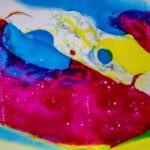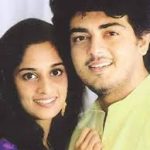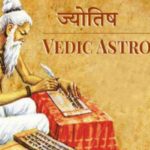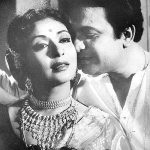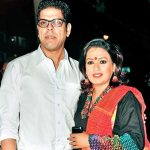https://www.jothishi.com/matchmaking/
Vedic Chart Analysis of Relationship in Marriage
Marriages are supposed to be designed in heaven and the relationship between partners can be smooth if a compatibility analysis is done between the Vedic Chart of the partners. The objective is to live a happy life, evolve into better human beings and spread positive aura and good thoughts into this world by eliminating negativity towards others and life in general.
Also, in this process contribute to kids who would grow up to become good human beings in this world. D9 chart called The Navamsa highlights the environment of marriage and Dharma in a person’s life.
The compatibility analysis primarily focuses on these parameters:

- The life span of both the partners and if they are close.
- Strength of the relationship
- Smooth Flow of energy from one partner to another and vice versa
- Possibility of a progeny in the relationship
- Match of the mind and soul of both partners.
- Obstructions to the relationship
- Any sudden hindrances and bad events related to the life.
- Balance of male and female energy among the partners.
- Strength of the sex life among partners/spouses.
- Nature, mind and character of each person.
- Relationship between the families of the partners.
- Balance of up’s and down’s in the partners lives.
- Intellectual, Physical and Emotional compatibility.
- Relationship with the in-laws.
Points to be considered for compatibility analysis:
- Ascendant of partners: It is good if both the ascendants are not placed in the same sign or house.
- Check if the Tattwa of the signs are compatible ( Jal, Vayu, Agni, Bhoomi etc)
- A 6/8 or 2/12 relationship between ascendants is not advisable.
- Same sign, 7/7 aspect or 5/9 relationship is the most preferred.
- Lord of the Ascendant and Atma Karaka:
- If the lords of both the ascendants of partners are same then it is fine.
- If the lords are friends then it is auspicious.
- Positive if Atma Karaka are friends or same.
- Long Life:
- Various methods have been prescribed in the classics for estimating life.
- A look at the strength of 1) Lagna ( you physical self), 2) Lagna Lord ( The intelligence that drives you) and 3) the Sun ( Soul) and Moon ( Mind) is the easiest and the best method.
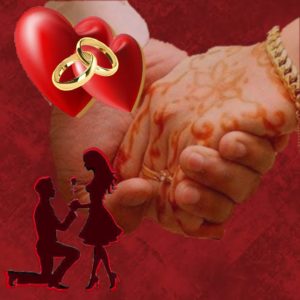
- Merging of charts: Merge both the charts and assess the relationship of the planets:
- Sun, Moon, Mars, Venus – if they have 5/9, 7/7, same, or Kendra relationship then it is fine.
- Samasaptakam ( Moon and Ascendant) indicates a good match depending on the Rasis/ lords and they should be friends
- This basically represents how the mind, soul, physical and mental energy flows between the partners.
- Could also assess what each partner brings into the relationship
- Merge both charts in Rasi and Navamsa (D1 and D9) to assess if there is harmony in the merger.
- Understand the houses that get activated by merging of charts – for ex: if a female partners chart activates the tenth house of the males chart with benefics then it will give a boost to the male’s career. Similarly we need to check the planets and houses that get activated/debilitated in the spouses charts.
Position of Moon and Upapada:
Very important factor as it indicates the mind in a relationship.
Relative Distance from the Male’s moon to the Female’s moon in their respective charts should be less than 7 houses and this will enable the partners to reach to each other and listen to get connected in the same direction.
Lords of the moon houses of spouses should be friends. Also, a match on the Tattwa of the moon houses is important. Upapada gives an indication on the direction and timing of marriage.
Upapada and its placement also denotes the marriage probability and timing in the chart.
- Planetary pairs and Male/ Female Energy:
Assess the Male and Female Energies in the chart. Sun and Mars in the Male and Venus and Moon in the female.

Venus and Mars in opposition indicates good flow of sexual energy between partners. Similarly Moon and Sun opposition indicates smooth flow of male and female energies. Need to evaluate for Obstruction/ debilitated/ negative planetary pairs in the chart.
Dasha Sandhi/ Kootu Dasha:
A very important indication in the matching of horoscopes.It is good to avoid horoscopes where-in Dasha’s of both partners change in a time frame of about a year. Generally regarded inauspicious if both the partners Dashas change at the same time.
Kuta Analysis and Kundli Matching:
The Kuta analysis consists of twelve factors and every factor represents some weighted average points.
All the points from the twelve compatibility factors are added up and if it touches a minimum level or score then a go-head is given.
This Analysis focuses on the Moon Nakshatra and Rashi of partners
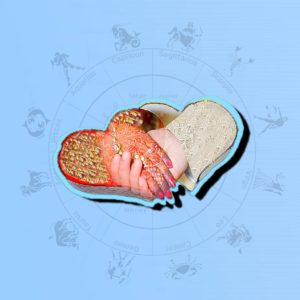
Kuta factors:
- Nadi Kuta: (Table 2)
- The Nakshatras are divided into three types – Vata, Pitta and Kapha.
- The Moon of the partners should fall in Nakshatras of a different type.
- The points accrued are 8.
- Assesses the physiological, psychic and spiritual compatibility
- Rashi Kuta:
- This factor deals with the signs in which the Moons of the partners are located.
- Distance from Moon in the chart of man to woman should be less than 7.
- 7 points will be given by this factor.
- Assesses the mental/ mind related compatibility
- Gana Kuta: (Table 1)
- Nakshatras are divided into Deva (Gods), Human (Manusha/ Man) and Demon (Rakshasa) Nakshatras.
- It is good if the Nakshatras of partners are in the same category. Even combinations like Deva-Manushya and Manushya – Rakshasa can be considered.
- 6 points are given for this match.
- Assesses the psychological temperament in vedic match.

Graha Maitram:
If the Lords of Moon signs of partners are friends then 5 points are given.
The point’s decreases to zero depending on the friend, neutral, and Enemy relationship between the lords of Moon sign of partners.
Assesses the intellectual compatibility.
- Yoni Kuta:
- Assesses the sexual compatibility.
- Every Nakshatra is associated with a type of yoni and it is best if both partners are born in Nakshatras of same yoni type and different sexes.
- If a couple has friendly yonis of the female sex, marriage will be acceptable and could be difficult if the two people both have male yonis.
- 4 points for this compatibility.
- Dina Kuta:
- If the Nakshatra of the man is 0, 2, 4, 6 or 8 Nakshatras away from the Nakshatra of the woman 3 points will be given.
- If the number is 9 or more it is divided by 9 and we take the remainder.
- Assesses the Longevity and Fortune.
- 3 points are indicated for this match.
- Vasyu Kuta:
- Assesses the chemistry and Magnetism between partners.
- Some signs have a certain degree of magnetism to each other and makes understanding of each other easier.
- If the Moon of the female feels magnetism towards the Moon of the male one point is given. If the Moon of the male feels attracted towards the Moon of the female one point is given.
- Hence 2 points are allocated for this match if Rasi’s or lords are friends.
- Varna Kuta:
- Assesses the spiritual development of partners.
- Categories are Priests, Warrior, Businessman, and Laborer
- Brahmin: Cancer, Scorpio, Pisces.
- Kshatriya: Leo, Sagittarius, Libra.
- Vaisya: Aries, Gemini, Aquarius.
- Sudra: Taurus, Virgo and Capricorn.
- If the woman is in a higher category as the man 0 points are given by this factor.
- If the man is in a higher category as the woman 1 point is given by this factor.
- If they both belong to the same category 1 point is given.

- Mahendra Kuta:
- Signifies longevity of the relationship
- The Nakshatra of the man should be 4, 7, 10, 13, 16, 19, 22 or 25 Nakshatras away from the Nakshatra of the woman. points are assigned.
- Stree Dirgha:
- The Nakshatra of the man should preferably be more than 9 constellations away from the Nakshatra of the woman.
- No points are given by this factor.
- Important point and it indicates the flow of energy from Male to Female without hinderances
- Rajju:
- This factor is used to measure the duration of married life.
- The Nakshatras are divided into 5 types of Rajju.
- Moon Nakshatras of the couple should not fall in the same Rajju.
- Padarajju: Ashwini (1), Ashlesha (9), Magha (10), Jyeshta (18), Mula (19), Revati (27).
- Katirajju: Bharani (2), Pushya (8), Purva Phalguni (11), Anuradha (17), Purva Ashadha (20), Uttara Bhadrapada (26).
- Nabhi: Krittika (3), Punarvasu (7), Uttara Phalguni (12), Vishakha (16), Uttara Ashadha (21), Purva Bhadrapada (25).
- Kantarajju: Rohini (4), Ardra (6), Hasta (13), Swati (15), Shravana (22), Satabhishak (24).
- Sirorajju: Mrigashira (5), Chitra (14), Dhanistha (23).
- No points are given by this factor.
- Vedha:
- Some Nakshatras are said to afflict each other.
- Good to avoid Nakshatras which afflict each other.
- Ashwini (1) and Jyeshta (18); Bharani (2) and Anuradha (17); Krittika (3) and Vishakha (16); Rohini (4) and Swati (15); Mrigashira (5) and Dhanistha (23); Ardra (6) and Shravana (22); Punarvasu (7) and Uttara Ashadha (21); Pushya (8) and Purva Ashadha (20); Ashlesha (9) and Mula (19); Magha (10) and Revati (27); Purva Phalguni (11) and Uttara Bhadrapada (26); Uttara Phalguni (12) and Purva Bhadrapada (25); Hasta (13) and Satabhishak (24).
More than 21 points out of a total of 36 is considered good and a green signal can be given for marriage of the partners.

Navamsha Analysis of both partners:
- A thorough analysis of the Navamsa chart can give an idea of the partner, profession and their family.
- 7th house, 9th house, Lords of these houses, Planets occupied in these houses, Arudhas of these houses and Graha Arudhas can give a point of view.
- Children, Dashas and Family:
- An important point that needs to be analyzed – Possibilities for children
- Also, the influence of family/ in-laws etc in each other’s life also needs to be studied.
- A brief analysis on the next few dashas / years need to be analyzed and if any effect of Saturn could be there.
Index – Table 1:
GANAS:
Deva Gana: Aswini, Mrigasira, Punarvasu, Pushya, Hasta, Swati, Anuradha, Shravana, Revati.
Manushya Gana: Bharani, Rohini, Ardra, Purvaphalguni, Uttaraphalguni, Purvashada, Uttarashada, Purvabhadrapada, Uttarabhadrapada.
Rakshasa Gana:Krittika, Aslesha, Magha, Chitra, Visakha,
Jyesta, Moola, Dhanista, Satabhisha
Table 2:
NADI:
| Nadi | Nakshatras |
| Adi | Aswini, Ardra, Punarvasu, Uttaraphalguni, Hasta, Jyeshta, Moola, Satabhisha, Poorvabhadra |
| Madhya | Bharani, Mrigasira, Pushyami, Poorvaphalguni, Chitra, Anuradha, Poorvashadha, Dhanista, Uttarabhadra |
| Antya | Krittika, Rohini, Aslesha, Magha, Swati, Visakha, Uttarashadha, Sravana, Revati |
Table 3:
YONI:
| Nakshatra | Yoni | Nakshatra | Yoni | ||
| 1 | Ashwini | Male Horse | 1 | Satabhishak | Female Horse |
| 2 | Bharani | Male Elephant | 2 | Revati | Female Elephant |
| 3 | Pushyami | Male Sheep | 3 | Kritika | Female Sheep |
| 4 | Rohini | Male Snake | 4 | Mrigashira | Female Snake |
| 5 | Moola | Male Dog | 5 | Aardra | Female Dog |
| 6 | Aaslesha | Male Cat | 6 | Punarvasu | Female Cat |
| 7 | Magha | Male Rat | 7 | Purva Phalguni | Female Rat |
| 8 | Uttara Phalgu | Male Cow | 8 | Uttara Bhadra | Female Cow |
| 9 | Swati | Male Buffalo | 9 | Hasta | Female Buffalo |
| 1o | Vishakha | Male Tiger | 10 | Chitra | Female Tiger |
| 11 | Jyeshtha | Male Hare | 11 | Anuradha | Female Hare |
| 12 | Poorvaashadha | Male Monkey | 12 | Shravani | Female Monkey |
| 13 | P.Bhadrapada | Male Lion | 13 | Dhanistha | Female Lion |
| 14 | Uttaraashadha | Male Mongoose | 14 | ||

Sexual compatibility is the best if both partners are born in Nakshatras that symbolize the same yoni type and of different sexes. If both Nakshatras are male there may be friction and quarreling. If both are female there may be lack of initiative and inertia.
The following animals are Hostile animals and that can be avoided for Yoni Kuta
- Cow and Tiger
- Elephant and Lion
- Horse and Buffalo
- Dog and Hare
- Serpent and Mongoose
- Monkey and Goat
- Cat and Rat
Vasya Koota – Table 4
Chatuspad – Aries and Taurus.
Dwipad – Gemini, Libra, Virgo, Sagittarius or Aquarius.
Jalachar – Pisces, Capricorn or Cancer.
Vanachar – Leo
Keet – Scorpio











